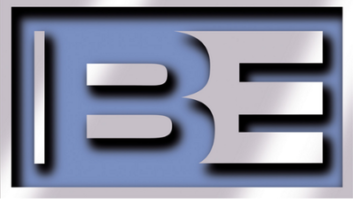Implementing MDCL
Jan 1, 2012 2:00 AM, By Doug Irwin, CPBE DRB AMD
Lower your station’s overhead by reducing power bills.

With the current state of the economy (in general) and the state of the broadcast economy (in particular) it makes sense to help any radio station cut down on its operating expenses. Thanks to a recent action by the Federal Communications Commission, there is now a way to help reduce the power bills for large AM stations (20kW and greater). It’s called Modulation Dependent Carrier Level (MDCL).
MDCL is really a generic acronym that covers the three methodologies: dynamic amplitude modulation (DAM), dynamic carrier control (DCC), and amplitude modulation companding (AMC). The purpose of each of these technologies is to improve the overall efficiency of large AM transmitters, thus reducing the expense associated with power. A 30 percent reduction in power use expense is a realistic expectation.
These technologies were developed in Europe and have effectively made their way stateside because the FCC is now willing to grant waivers to section 73.1560 for stations that wish to implement MDCL. I’ll cover a little about each of the three methods, what the expected results are, and how to implement MDCL at your station.
Let’s first review amplitude modulation. Remember that at 100 percent modulation, the total amount of power in the upper and lower sidebands is 50 percent of the carrier power. So, for example, with a 50kW carrier, 25kW of power is radiated (along with the 50kW carrier) at the 100 percent modulation level. We’re accustomed to a linear function that describes the relationship between the audio level and the percentage of modulation.
Out in the field, at each receiver, again we’re accustomed to a linear function that describes the audio level obtained based on the modulation percentage of the received carrier. Additionally, the amount of quieting that a receiver will produce is dependent upon the carrier level that is encountered.
– continued on page 2
Implementing MDCL
Jan 1, 2012 2:00 AM, By Doug Irwin, CPBE DRB AMD
Lower your station’s overhead by reducing power bills.
Back to the transmitter now: again, with a 50kW carrier, the transmitter can develop 25kW of sideband power. But what if the transmitter itself could analyze the incoming audio, so that it could determine just how much carrier power is really needed to generate the appropriate amount of sideband power? If the program audio was speech, for example, and there were gaps in the audio, wouldn’t it make sense to be able to reduce the carrier power during those gaps in speech when there isn’t going to be any need for modulation? The answer to that question is yes, and that basically describes what DCC does. DCC was developed during the early 1980s by Asea Brown Bovari, a Swiss company that manufactured large MW transmitters at the time.
DAM is an implementation of DCC and works as described, but during moderate modulation levels. (See Figure 1.) An audio peak detector’s output is followed by appropriate filters that set the attack and delay; subsequent output is then used for the input of a lookup table, the output of which sets the carrier level. From the description on how this system works, it’s not hard to see that it would be most effective with speech programs, since there are always gaps in speech. It’s also interesting to note that when the carrier power is reduced, the modulation depth is effectively increased; so in the field, a receiver’s audio output will make the audio sound somewhat louder during the brief instances that the carrier power is reduced.

Figure 1. DAM showing power and voltage compared to modulation. Courtesy Nautel. Click to enlarge.
With a heavily processed music program, one can see that DAM likely wouldn’t be effective in saving power since there would be few opportunities to reduce the carrier power. If the AM station in question has a highly processed program, then the MDCL method that would save power would be AMC (amplitude modulation companding). Unlike DAM (or DCC) which just reduces the carrier power, AMC reduces the carrier power and the power generated by the modulation, so the modulation percentage stays constant, even with varying carrier power. (See Figure 2.)

Figure 2. Typical AMC response. Courtesy Nautel. Click to enlarge.
You may at first ask, Why would I want to reduce my carrier power during peak modulation? Won’t that make the station sound weaker on receivers? According to research on this topic, the answer is, Yes, but it’s barely audible. Think about it: The time that noise in the output of an AM receiver will be most noticeable is during no modulation. AMC does not reduce the carrier level at this point at all. The time that noise is least noticeable in the output of an AM receiver is at the highest modulation levels. This is an effect of the way human hearing works; noise is masked in the presence of other loud sounds. AMC takes advantage of this; at the time that you can most afford it (highest modulation levels) the overall carrier and modulation power are reduced. The noise floor would increase, but in practice that isn’t perceptible by the listener.
– continued on page 3
Implementing MDCL
Jan 1, 2012 2:00 AM, By Doug Irwin, CPBE DRB AMD
Lower your station’s overhead by reducing power bills.
Implementing MDCL
Harris offers two MDCL methodologies. The first is what it calls ACC (adaptive carrier control) and also AMC. ACC reduces the carrier level in -1dB steps (from -1 to -6dB) when the necessary modulation level is low. (See Figure 3.) AMC works as described earlier, reducing the overall output power by -3dB at 100 percent modulation (see Figure 4). According to their website, MDCL can be retrofitted in to the DX, DAX, and 3DX transmitters already in the field by the installation of a modification kit. New transmitters can be delivered with MDCL capability ready to go from the outset.

Figure 3. Typical ACC characteristic curve. Courtesy Harris. Click to enlarge.

Figure 4. A typical AM response curve. Courtesy Harris. Click to enlarge.
Nautel offers DCC, DAM or AMC in its AM transmitter line. The NX Series transmitters have DCC and AMC capability included as a standard feature; the user needs to turn it on. Additionally, according to information on the website, older Nautel transmitters can be retrofitted with MDCL with the addition of an NX-series DSB board that lives in a 1RU chassis. Carrier and audio levels are then sent from this chassis in to the older transmitter in order to make MDCL work.
– continued on page 4
Implementing MDCL
Jan 1, 2012 2:00 AM, By Doug Irwin, CPBE DRB AMD
Lower your station’s overhead by reducing power bills.
FCC considerations
If you read the FCC’s public notice DA 11-1535, dated Sept. 13, 2011, you will note that it reads “Use of MDCL technologies requires a waiver of Section 73.1560(a) of the Commission’s Rules, which sets upper and lower limits for an AM station’s operating power.” So get ready to ask for that waiver. Fortunately, the FCC is trying to make it as easy as it can. “AM licensees who wish to implement MDCL technology shall file with the Audio Division a letter requesting waiver of Section 73.1560(a) of the Rules…” Once the FCC has allowed the waiver, it will modify your license accordingly.
Other considerations
It’s pretty clear that when measuring the common point current, base currents or monitor points you’ll need to be able to turn off MDCL. What about modulation monitoring, though? Well, fortunately at least one AM modulation monitor can be using during MDCL: the Belar AMMA-2. In addition to monitoring standard AM modulation, it monitors MDCL AM transmissions. The AMMA-2 tracks the carrier, capturing the highest and lowest values of the carrier level, as well as the decibel ratio of the carrier high/low values. Modulation readings are then referenced to the carrier level appropriate for the MDCL system in use.
MDCL can be an effective means of lowering your station’s overhead by reducing power bills. It should be noted that MDCL is most effective at power levels greater than 20kW. Consult with your transmitter manufacturer to see how it can potentially benefit your operation.
Irwin is transmission systems supervisor for Clear Channel NYC and chief engineer of WKTU, New York.
January 2012
The advantages of Modulation Dependent Carrier Level technology, a tour of WEBE-108/WICC, understanding tee networks, Field Reports on the Deva Broadcast DB44 and Nagra SD, and a comparison of compact mixers….











